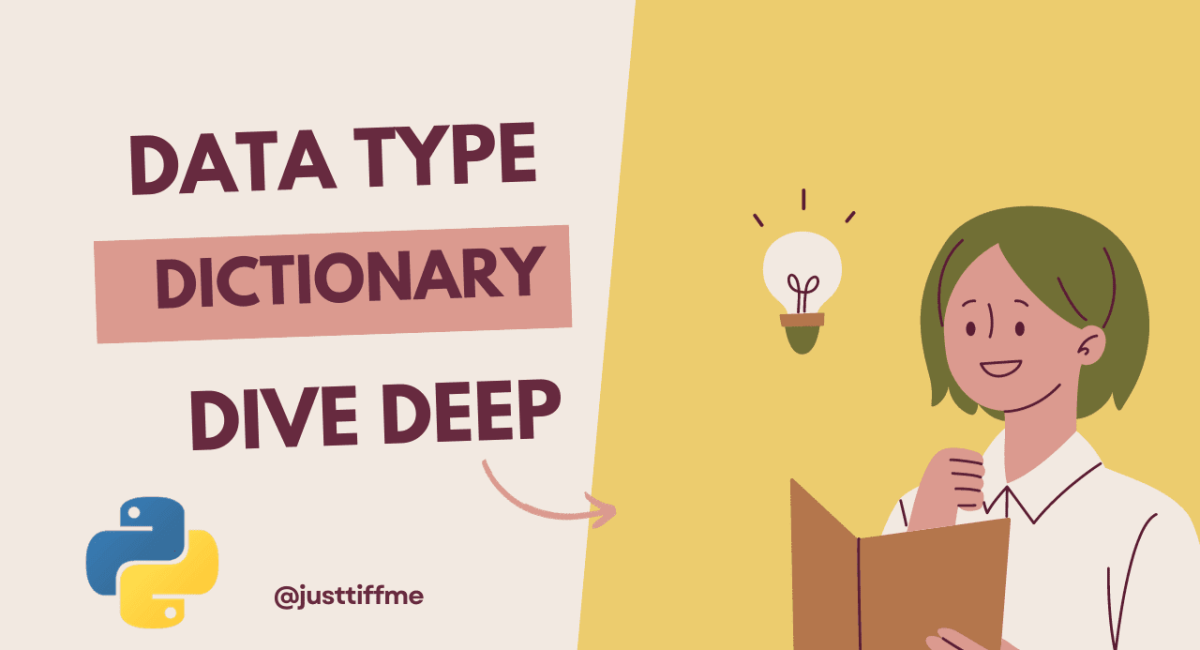Python’s mapping data types are versatile containers that allow you to store and manage data in a key-value format. This means you can associate a unique key with each piece of data, making it incredibly efficient for data retrieval and manipulation.
In this article, we will delve into Python’s mapping data types, starting from the basics and gradually advancing to more complex concepts.
Understanding Dictionaries
In Python, a mapping data type is a collection of key-value pairs. It allows you to store data in an unordered, mutable manner. The primary mapping data type in Python is the dictionary.
Dictionaries in Python are defined using curly braces `{}` and consist of key-value pairs separated by colons. Each key is unique, and it maps to a specific value.
# Creating a dictionary with various data types as values
person_info = {
'name': 'Bob',
'age': 30,
'is_student': False,
'grades': [95, 88, 92]
}
# Accessing values using keys
print(person_info['age']) # Output: 30
Creating and Accessing Dictionaries
You can create dictionaries using curly braces {} and specify key-value pairs within them. Accessing values in a dictionary is done by referring to their keys.
# Creating an empty dictionary and adding values
my_dict = {}
my_dict['name'] = 'Charlie'
my_dict['age'] = 28
# Accessing values
print(my_dict['name']) # Output: Charlie
Modifying and Updating Dictionaries
Dictionaries in Python are mutable, allowing you to change their values, add new key-value pairs, or remove existing ones.
# Modifying a value
my_dict['age'] = 29
# Adding a new key-value pair
my_dict['city'] = 'Paris'
# Removing a key-value pair
del my_dict['city']
Dictionary Methods
Python provides various methods to manipulate dictionaries, such as `keys()`, `values()`, and `items()`, allowing you to work with keys, values, and key-value pairs separately.
# Dictionary methods
my_dict = {'name': 'David', 'age': 35}
keys = my_dict.keys() # Get keys
values = my_dict.values() # Get values
items = my_dict.items() # Get key-value pairs as tuples
Iterating Through a Dictionary
You can iterate through a dictionary using loops like `for` and perform actions on each key or value.
# Sample dictionary
student_scores = {
'Alice': 95,
'Bob': 88,
'Charlie': 92,
'David': 78,
'Eve': 84
}
# Iterating through keys
for student in student_scores:
print(student) # This will print the names (keys) of the students
# Output:
# Alice
# Bob
# Charlie
# David
# Eve
You can also iterate through both keys and values simultaneously using the .items() method:
# Iterating through keys and values
for student, score in student_scores.items():
print(f"{student}'s score is {score}")
# Output:
# Alice's score is 95
# Bob's score is 88
# Charlie's score is 92
# David's score is 78
# Eve's score is 84
In this case, the for loop iterates through the dictionary’s key-value pairs, and you can access both the student’s name (key) and their score (value) within the loop.
Dictionary Comprehensions
Python supports dictionary comprehensions, a concise way to create dictionaries using a single line of code.
Basic Dictionary Comprehension
# Creating a dictionary using a comprehension
squares = {x: x**2 for x in range(1, 6)}
print(squares) # Output: {1: 1, 2: 4, 3: 9, 4: 16, 5: 25}
In this example, we create a dictionary `squares` using a comprehension. It generates key-value pairs where the key is an integer from 1 to 5, and the value is the square of that integer.
Conditional Dictionary Comprehension
You can also include conditions in dictionary comprehensions to filter or manipulate data while creating the dictionary:
# Creating a dictionary with a condition
even_squares = {x: x**2 for x in range(1, 11) if x % 2 == 0}
print(even_squares) # output: {2: 4, 4: 16, 6: 36, 8: 64, 10: 100}
In this example, we create a dictionary `even_squares` that contains only the squares of even numbers from 1 to 10. The condition `if x % 2 == 0` filters out odd numbers.
Using Dictionary Comprehension with Lists
You can also create dictionaries using comprehensions by zipping two lists together:
# Creating a dictionary from two lists
fruits = ['apple', 'banana', 'cherry']
prices = [1.0, 0.5, 1.2]
fruit_prices = {fruit: price for fruit, price in zip(fruits, prices)}
print(fruit_prices) # Output: {'apple': 1.0, 'banana': 0.5, 'cherry': 1.2}
Here, we create a dictionary `fruit_prices` by combining two lists: `fruits` and `prices`. The `zip()` function pairs elements from both lists, and the comprehension creates key-value pairs.
Sets vs. Dictionaries
Sets in Python are collections of unique, unordered elements, enclosed in curly braces {}. Unlike dictionaries, they don’t have key-value pairs.
# Sets vs. Dictionaries
my_set = {1, 2, 3, 4, 5} # Note that duplicates are automatically
my_dict = {"apple": 3, "banana": 2, "cherry": 5}
# Sets are used for unique collections
# Dictionaries are used for key-value mappings
Sets are advantageous when you need a collection of unique elements, unlike lists or tuples that can contain duplicates.
# Using a list with duplicates
my_list = [1, 2, 2, 3, 4, 4, 5]
# Converting the list to a set to remove duplicates
my_set = set(my_list) # Resulting set: {1, 2, 3, 4, 5}
Nested Dictionaries
Explore the concept of nested dictionaries, where dictionaries are stored within other dictionaries, providing a structured way to organize data.
# Nested dictionaries
student = {
"name": "Alice",
"age": 20,
"courses": {
"math": 90,
"history": 85,
"science": 92
}
}
print(student["courses"]["math"])
Limitations
Mapping data types like dictionaries are not suitable for tasks that require ordered data or fast searching based on values. In such cases, you might consider using lists or sets.
Here are some key limitations of mapping data types:
Mapping data types don’t guarantee any specific order for elements (for python version older than 3.7)
Keys in dictionaries must be unchangeable.
Each key must be unique; duplicates overwrite previous values.
Dictionaries can be memory-intensive, especially for large datasets.
You can’t access elements by position; you must use keys.
Performance may degrade in some situations, like hash collisions.
Best for key-value associations, not ideal for purely sequential data.
Sorting dictionaries isn’t as straightforward as sorting sequences.
Managing Memory with Dictionaries
To optimize memory usage when working with dictionaries in Python:
Choose Appropriate Data Types
Ensure that keys and values are of appropriate data types and that keys are immutable. This helps in efficient hashing and reduces memory overhead.
Garbage Collection
Python has a built-in garbage collector that automatically reclaims memory from objects that are no longer referenced. While Python handles this automatically, understanding the garbage collection process can be beneficial for managing memory efficiently.
Memory Profiling
Consider using memory profiling tools to analyze your program’s memory usage, especially if you work with large dictionaries. Profilers can help identify memory bottlenecks and optimize memory-intensive parts of your code.
Conclusion
In conclusion, mapping data types, particularly dictionaries, are essential tools in Python programming. They offer flexibility, efficiency, and versatility for various data-related tasks. With the ability to store data as key-value pairs, dictionaries provide an excellent way to organize and manipulate information in your Python programs.
FAQs
A mapping data type in Python is a collection of key-value pairs, with dictionaries being the most common example. It allows you to associate unique keys with specific values, making it easy to access and manipulate data.
No, dictionary keys must be unique. If you attempt to create duplicate keys, the latest value assigned to the key will overwrite the previous one. This uniqueness ensures efficient data retrieval.
You can use the `pop()` method to remove an item from a dictionary by specifying its key. Additionally, you can use the `del` statement to delete a key-value pair.
Dictionaries are handy for various tasks, such as:
- Configuration Management: Storing and managing configuration settings for applications.
- Counting Occurrences: Counting the frequency of elements in a dataset, like word frequencies in a text document.
- Lookup Tables: Creating lookup tables for efficient data retrieval.
- Data Transformation: Converting data from one format to another, often used in data processing pipelines.
Sets are used when you need to store a collection of unique items, and you don’t need to associate them with specific values. In contrast, dictionaries are used when you need to map keys to corresponding values, making them suitable for tasks like indexing, configuration management, and data transformation.




